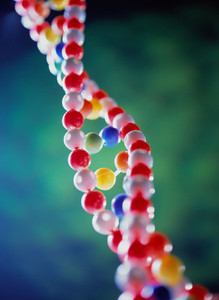Originator human recombinant granulocyte colony-stimulating factor (G-CSF) filgrastim has been widely used for the mobilization of CD34+ stem cells in healthy donors. However, there is limited experience with the use of biosimilar G-CSF for the mobilization of peripheral blood stem cells (PBSCs), especially in healthy donors. A recent study by Professor Schmitt and co-authors has addressed this issue and found that biosimilar G-CSF showed comparable efficacy and safety with reference G-CSF (Neupogen) when used for the mobilization of CD34+ stem cells, as well as CD3+ T-cells and nucleated cells, in healthy donors [1].
Mobilization of stem cells in healthy donors by G-CSF biosimilars shows comparable efficacy and safety to Neupogen
Biosimilars/Research
|
Posted 01/02/2013
 0
Post your comment
0
Post your comment

Filgrastim is a growth factor used to aid the recovery of bone marrow after chemotherapy treatment for cancer, especially in patients with neutropenia (low white blood cell count in the blood), which causes reduced immune response. It may also be used to mobilize CD34+ stem cells in healthy donors, however, there is limited experience on the use of biosimilar G-CSF for the mobilization of peripheral blood stem cells (PBSC) especially in healthy donors.
The first biosimilar G-CSF was licensed by EMA in 2008, and there are currently six biosimilar G-CSF products licensed for use in the EU [2]. All of these biosimilars are also approved for haematopoietic stem cell transplantation.
Prior to the availability of G-CSF, donors could only donate bone marrow. However, over the last ten years there has been a marked shift from the donation of bone marrow to PBSCs, due largely to donor preference.
Professor Schmitt and co-authors from the Stem Cell Transplantation Unit of the University Clinic of Rostock, Germany analyzed 22 patients and 22 healthy donors. One cohort of 11 donors and 11 allogeneic haematopoietic stem cell transplantation patients received G-CSF biosimilars (Biograstim, Ratiograstim or Tevagrastim) and the other cohort received Neupogen. The following parameters were evaluated:
- white blood cell (WBC) count in the peripheral blood after mobilization
- CD34+ cell count after mobilization
- CD34+ cell count absolute numbers and CD34+ cells per kg body weight of the patients
- number of leukapheresis procedures
- number of CD3+ T lymphocytes
- number of nucleated cells in the graft
- time till regeneration of WBC, neutrophils and platelets
- side effects
In healthy donors receiving the G-CSF biosimilar subcutaneously, WBC counts in the peripheral blood ranged from 29.9 g/L to 64.6 g/L (median 50.8 g/L) and the CD34+ cell counts from 19.3 mm3 to 114.6 mm3 (median 65.8 mm3). In healthy donors receiving the Neupogen subcutaneously, WBC counts ranged from 27.1 g/L to 62.5 g/L (median 43.3 g/L) and the CD34+ cell counts from 13.6 mm3 to 122.4 mm3 (median 50.9 mm3). These, as well as other parameters collected, showed no significant difference between use of the biosimilar or use of Neupogen.
With respect to side effects, neither allergic reactions nor alterations in kidney and liver function were observed in the donors. In both groups, 6/11 donors reported arthralgias during the time of stimulation with G-CSF.
Professor Schmitt and co-authors concluded that the lack of significant differences for these parameters for grafts obtained after mobilization with biosimilar G-CSF (Biograstim, Ratiograstim or Tevagrastim) versus reference G-CSF (Neupogen) clearly demonstrate the ‘similarity’ of the biosimilar in terms of efficacy and safety. The study further concludes that mobilization with G-CSF biosimilars (Ratiograstim, Tevagrastim and Biograstim) is feasible and safe. Furthermore, the authors do not support concerns about the use of G-CSF biosimilars for the mobilization of stem cells in healthy donors.
Conflict of interest
The authors of the study declared that M Schmitt and M Freund received travel grants and speakers’ honoraria from both Amgen Germany and Teva/Ratiopharm Direct Germany; I Hilgendorf received a travel grant from Ratiopharm Direct Germany. The work/study was supported by a grant from Ratiopharm Direct Ltd, Ulm, Germany.
Editor’s comment
If you are interested in contributing a research article in a similar area to GaBI Journal, please send us your submission here.
Related articles
G-CSF biosimilars – World Marrow Donor Association position
Pharmacodynamic response of biosimilar filgrastim
Market access for biopharmaceuticals and biosimilars: a case study
References
1. Schmitt M, Xu X, Hilgendorf I, Schneider C, Borchert K, Gläser D, Freund M, Schmitt A. Mobilization of PBSC for allogeneic transplantation by the use of the G-CSF biosimilar XM02 in healthy donors. Bone Marrow Transplant. 2013 Jan 14. doi:10.1038/bmt.2012.270
2. GaBI Online - Generics and Biosimilars Initiative. Biosimilars approved in Europe [www.gabionline.net]. Mol, Belgium: Pro Pharma Communications International; [cited 2013 Feb 1]. Available from: www.gabionline.net/Biosimilars/General/Biosimilars-approved-in-Europe
Permission granted to reproduce for personal and educational use only. All other reproduction, copy or reprinting of all or part of any ‘Content’ found on this website is strictly prohibited without the prior consent of the publisher. Contact the publisher to obtain permission before redistributing.
General
Samsung Bioepis wins Pyzchiva case; Regeneron patent rulings threaten foreign biosimilars
Chinese biosimilars go global: growth, partnerships, and challenges
What is the future for the US biosimilar interchangeability designation

Biosimilars/Research Posted 05/06/2025
Biosimilar clinical efficacy studies: are they still necessary?

Biosimilars/Research Posted 27/05/2025
The best selling biotechnology drugs of 2008: the next biosimilars targets








Post your comment